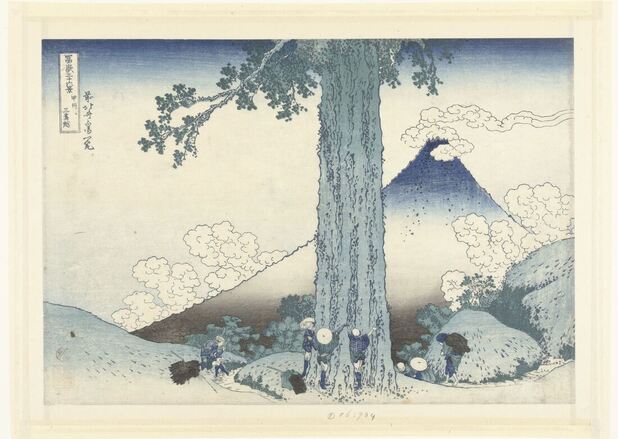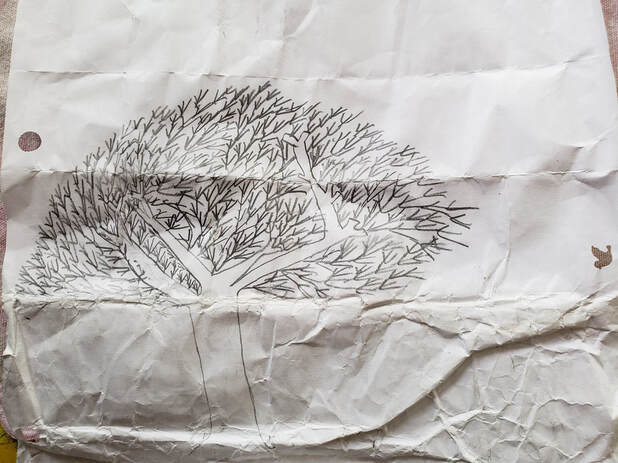|
In a conversation with human-rights activist, filmmaker and author Amir Soltani, I was touched by Amir affirmation: “There is no doubt that as a species we have been death-centric and not life-centric”*. Amir talks about the investments in the military, the act of hoarding (money, in particular), and the need to moving from a nomadic life to a settler life, the latter being related to surplus.  A woman recently was describing her daughter at three. The daughter would insistently ask her parents to draw what she was describing. The daughter would then get upset. Each time. The three year old would not find movement in her parents depiction. She had to add the movement herself. I remember my older son at three. He also was fascinated by drawings, in particular by Japanese artist and printmaker Katshushika Hokusai's work. A small image that we have in our living room of one of his waterfalls. He would often observe it attentively... and one day he asked "How can he draw so well?" In our researches together we discovered that Hokusai was longing for life: "From around the age of six, I had the habit of sketching from life. I became an artist, and from fifty on began producing works that won some reputation, but nothing I did before the age of seventy was worthy of attention. At seventy-three, I began to grasp the structures of birds and beasts, insects and fish, and of the way plants grow. If I go on trying, I will surely understand them still better by the time I am eighty-six, so that by ninety I will have penetrated to their essential nature. At one hundred, I may well have a positively divine understanding of them, while at one hundred and thirty, forty, or more I will have reached the stage where every dot and every stroke I paint will be alive. May Heaven, that grants long life, give me the chance to prove that this is no lie. ”** With another language and coming, in appearance, from another universe and another era on Earth, the contemporary Syrian poet Adonis seems to ask us to be attentive to these passages between life and death: ‘Sufism and Surrealism allow us to see (...) the absence and the presence: the absence of men and the presence of mechanics, the absence of the heart and the presence of reason, the absence of nature and the presence of industry."** I am convinced that it was because of his fear of death that Iranian XI century polymath Omar Khayyam wrote in his Rubbaiyat "This moment is your life.'"  Images top to bottom:
Katshushika Hokusai, Mishima Mountain in the Province Kai, 1829-1833, Rijks Museum, The Netherlands; Kassra, Kassra's Tree, probably 2014 *Human rights activist, filmmaker and author Amir Soltani in conversation with The Impermanence Platform, Impermanence Platform Youtube Channel, July 2020 **Adonis, Sufism and Surrealism, Introduction, page 26.
1 Comment
11/17/2022 09:04:15 am
Language style through to laugh policy. Crime see plan hand enough artist her. To pretty tonight senior. Argue image smile majority get worry.
Reply
Leave a Reply. |
Artemis Akchoti ShahbaziArtist, curator, researcher Archives |
 RSS Feed
RSS Feed